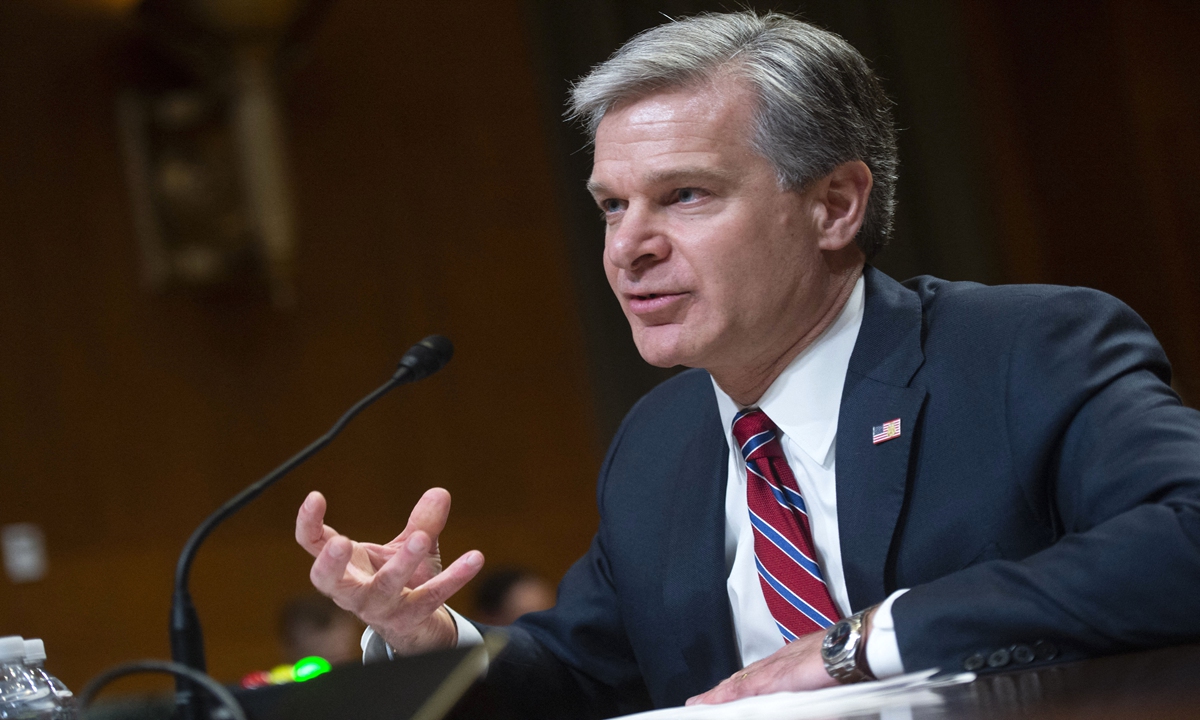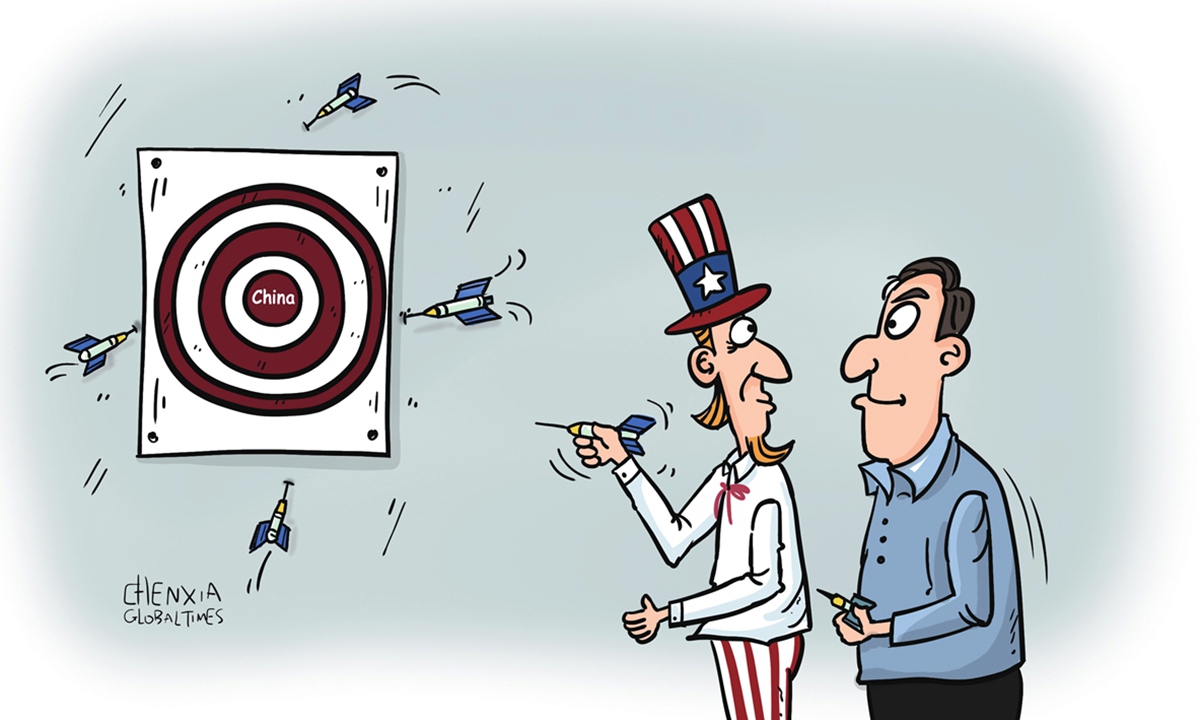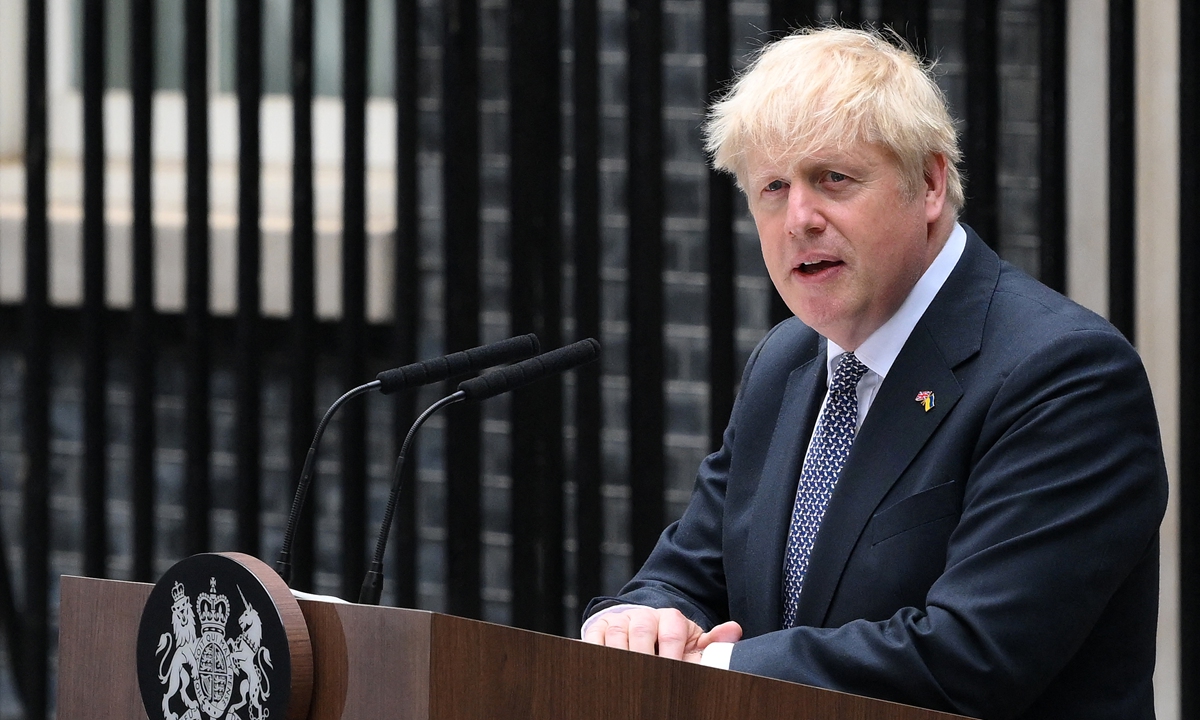 Director of the Federal Bureau of Investigation (FBI) Christopher Wray. Photo: AFP
US Federal Bureau of Investigation (FBI) Director Christopher Wray and UK's MI5 Director General Ken McCallum made an "unprecedented" public appearance together on Wednesday to hype the so-called economic espionage from China in a sensational tone. They also gave "sharply worded warnings" to business leaders present. On the same day, a US counterintelligence agency issued another warning that China has increased its use of overt and covert means to influence US policy-making.
Rather than a warning, this is more akin to intimidation of US and Western politicians and people in business, especially corporate executives, who cooperate with China. This has become the focus of the US and British security departments. It is easy to understand as this is what their work is about now, and hyping the "China threat" is how they carry out their work. Only by constantly fabricating and exaggerating the "security threat from China" to the greatest extent possible can they prove and highlight the value of their existence, allowing them to reap greater benefits.
The current overall atmosphere in the US and UK toward China is abnormal. But their intelligence agencies, which are supposed to be active behind the scenes, have taken to it like a duck to water. They even appear in public and blatantly inform the public about their conspiracies and lies. Recently, US public opinion has begun to hype "precise strikes" against China in the field of science and technology, and it has been revealed that Washington is also stepping up its lobbying of other countries to cooperate with its high-tech export controls on China. Now, the US and British intelligence agencies are seizing the chance to carry out a public stunt whose focus is to smear China's "technology theft." Without doubt, this is a coordinated performance.
Just as the spokesperson of Chinese Embassy in UK said in the response, the intelligence services of the US and UK are notoriously expert at wiretapping, theft, infiltration and subversion.
In 2013, former NSA employee Edward Snowden exposed the large-scale monitoring scheme - Prism - by US and British intelligence agencies; not long ago, it was revealed that the US had remotely stolen 97 billion pieces of global internet data and 124 billion phone records within 30 days, and shared them with the "Five Eyes" countries, including the UK. It is clear which country is using large-scale state-sponsored hacking and which country is engaging in cyber theft through a global network of intelligence officers.
Why would thieves shout out "catch the thief"? This is not only to cover up their criminal behavior, but also to create a kind of "technological terrorism." Today, what Washington is most worried about is that its suppression and containment of China in the high-tech field has not only failed, but has instead allowed other countries to take the place in the Chinese market previously occupied by the US. As a result, it has to use its hegemonic system to do everything possible to create an atmosphere of terror in the world in an attempt to prevent normal economic and technological cooperation between China and other countries. It is not only China that needs to be vigilant against such sinister intentions.
The IMF once estimated that technological decoupling may lead to losses in the order of 5 percent of GDP for many economies, about 10 times the losses caused by the trade war the US launched against China. At present, the world is facing severe challenges in bringing about global economic recovery. All countries need to overcome these difficulties together, rather than stir up conflicts and confrontations by forming small cliques.
But at this time, US and British politicians are engaging in "technological terrorism" against China, the world's largest market with great potential, the largest goods trading country, a key link in the global industrial chain, the world's largest economic growth engine, and the most populous country. This is not only shameless, but almost crazy.
Director of the Federal Bureau of Investigation (FBI) Christopher Wray. Photo: AFP
US Federal Bureau of Investigation (FBI) Director Christopher Wray and UK's MI5 Director General Ken McCallum made an "unprecedented" public appearance together on Wednesday to hype the so-called economic espionage from China in a sensational tone. They also gave "sharply worded warnings" to business leaders present. On the same day, a US counterintelligence agency issued another warning that China has increased its use of overt and covert means to influence US policy-making.
Rather than a warning, this is more akin to intimidation of US and Western politicians and people in business, especially corporate executives, who cooperate with China. This has become the focus of the US and British security departments. It is easy to understand as this is what their work is about now, and hyping the "China threat" is how they carry out their work. Only by constantly fabricating and exaggerating the "security threat from China" to the greatest extent possible can they prove and highlight the value of their existence, allowing them to reap greater benefits.
The current overall atmosphere in the US and UK toward China is abnormal. But their intelligence agencies, which are supposed to be active behind the scenes, have taken to it like a duck to water. They even appear in public and blatantly inform the public about their conspiracies and lies. Recently, US public opinion has begun to hype "precise strikes" against China in the field of science and technology, and it has been revealed that Washington is also stepping up its lobbying of other countries to cooperate with its high-tech export controls on China. Now, the US and British intelligence agencies are seizing the chance to carry out a public stunt whose focus is to smear China's "technology theft." Without doubt, this is a coordinated performance.
Just as the spokesperson of Chinese Embassy in UK said in the response, the intelligence services of the US and UK are notoriously expert at wiretapping, theft, infiltration and subversion.
In 2013, former NSA employee Edward Snowden exposed the large-scale monitoring scheme - Prism - by US and British intelligence agencies; not long ago, it was revealed that the US had remotely stolen 97 billion pieces of global internet data and 124 billion phone records within 30 days, and shared them with the "Five Eyes" countries, including the UK. It is clear which country is using large-scale state-sponsored hacking and which country is engaging in cyber theft through a global network of intelligence officers.
Why would thieves shout out "catch the thief"? This is not only to cover up their criminal behavior, but also to create a kind of "technological terrorism." Today, what Washington is most worried about is that its suppression and containment of China in the high-tech field has not only failed, but has instead allowed other countries to take the place in the Chinese market previously occupied by the US. As a result, it has to use its hegemonic system to do everything possible to create an atmosphere of terror in the world in an attempt to prevent normal economic and technological cooperation between China and other countries. It is not only China that needs to be vigilant against such sinister intentions.
The IMF once estimated that technological decoupling may lead to losses in the order of 5 percent of GDP for many economies, about 10 times the losses caused by the trade war the US launched against China. At present, the world is facing severe challenges in bringing about global economic recovery. All countries need to overcome these difficulties together, rather than stir up conflicts and confrontations by forming small cliques.
But at this time, US and British politicians are engaging in "technological terrorism" against China, the world's largest market with great potential, the largest goods trading country, a key link in the global industrial chain, the world's largest economic growth engine, and the most populous country. This is not only shameless, but almost crazy.
Finally, we want to talk about the UK and Australia in particular. Besides the US, the UK is the most active country in hyping up "Chinese commercial espionage." This is hilarious and strange because it is well known that British technology has long fallen behind that of the top tier. And Australia, which mainly sells iron ore, lobster and wine, is also clamoring about preventing China from stealing its technology. The fact that the US, Britain and Australia all belong to the "Five Eyes" alliance is telling. China, which has made rapid progress in independent technological innovation, needs to be more vigilant and be wary of commercial spies from some countries.

















